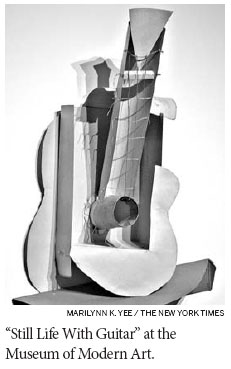Cubism that struck a chord

It's 1912, and Pablo Picasso is in Paris, thinking: All right, what's next?
A few years earlier he painted the remarkable picture "Les Demoiselles d'Avignon." People had thrown up their hands in alarm; his friends hardly knew what to say. Energized by the fuss, he punched out variations on the theme: paintings of sharp-elbowed, wood-brown nude women, their bodies all ax-cut facets, set in pockets of shallow space.
He'd changed history with this work. He'd replaced the benign ideal of the Classical nude with a new race of sexually armed and dangerous beings. He'd made art as much a problem as a pleasure. At the same time he left fundamentals unchanged. The human figure remained sovereign, abstraction unexplored. So there were further leaps to take. And Picasso had to ask himself how far he was willing to go.















